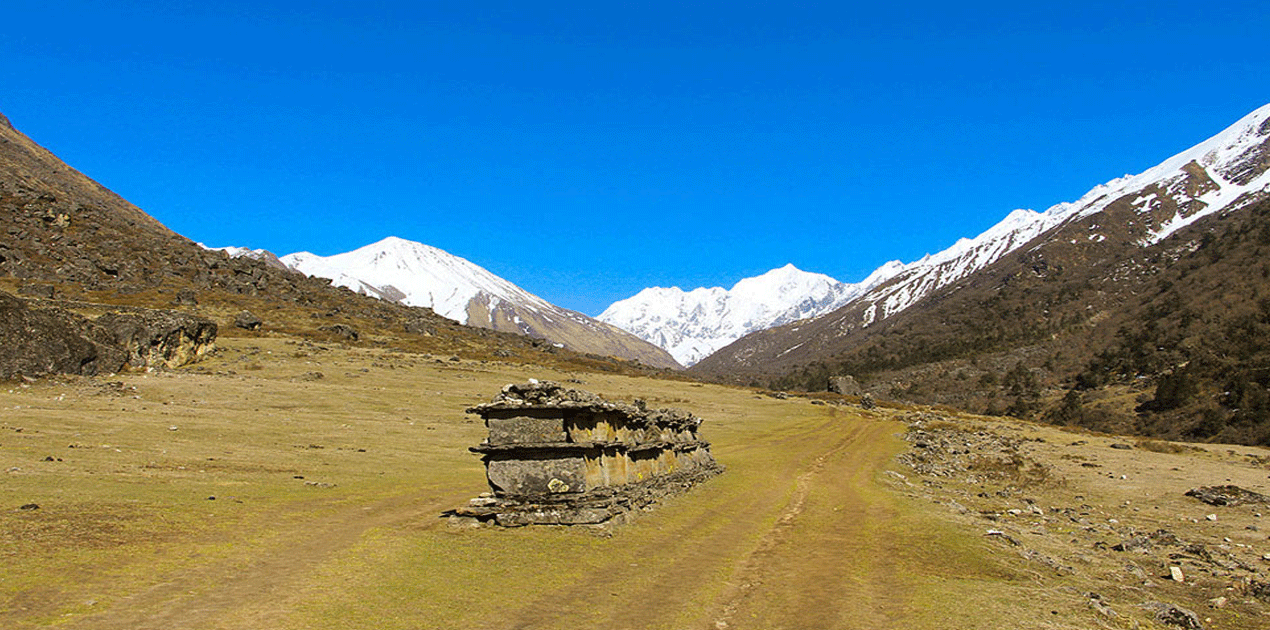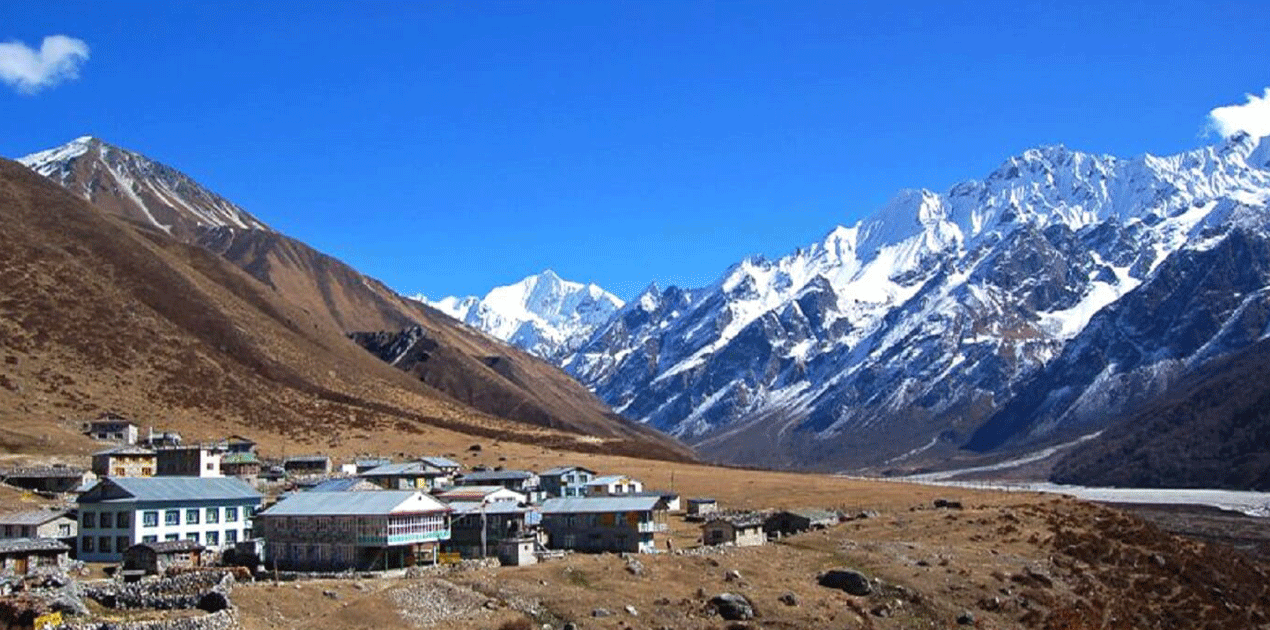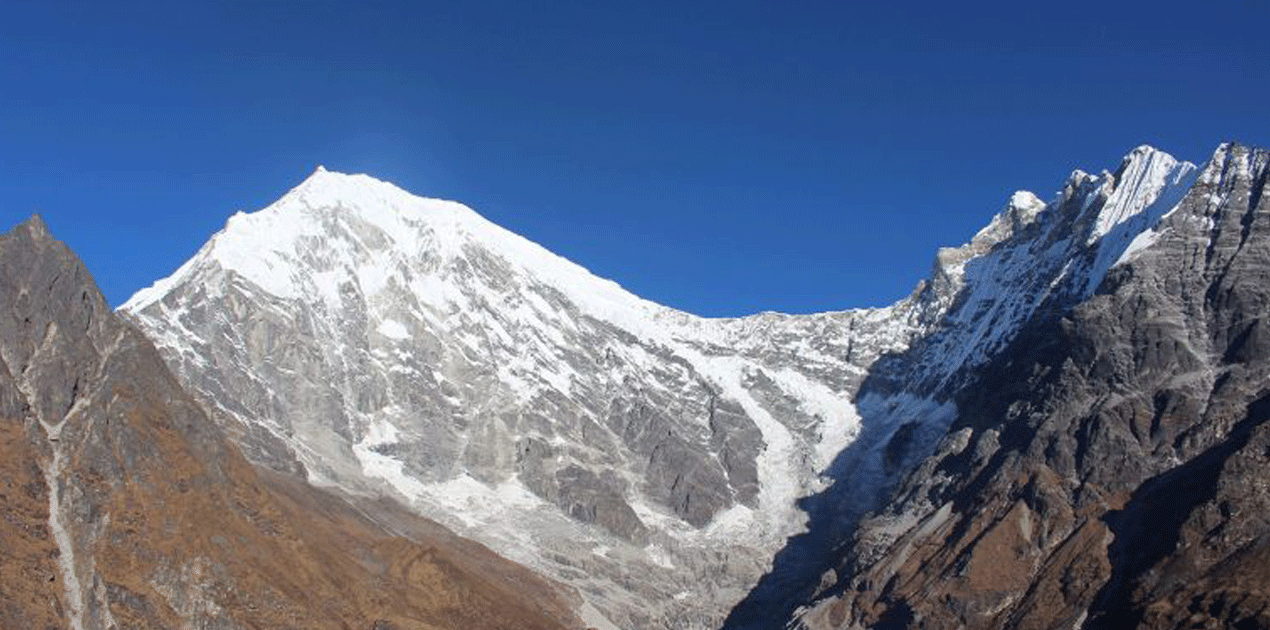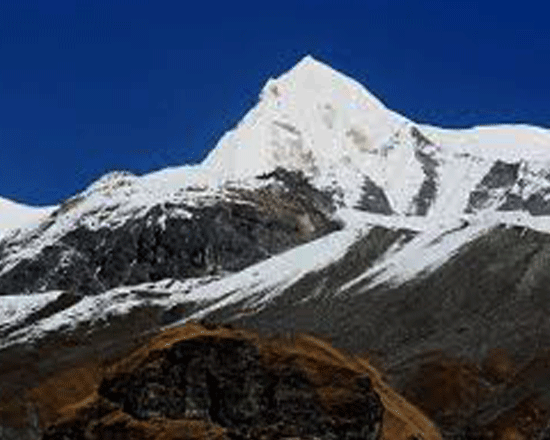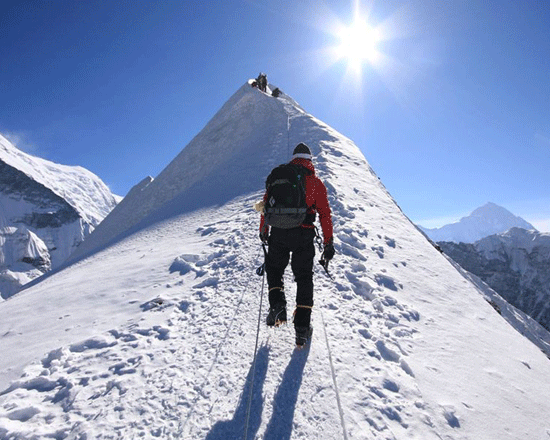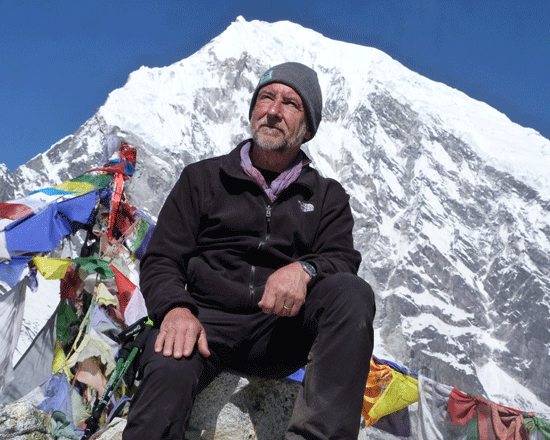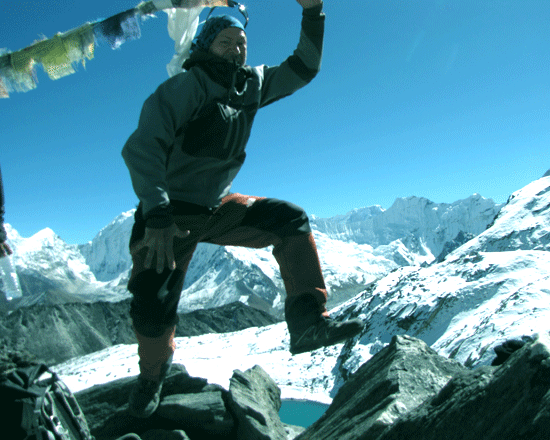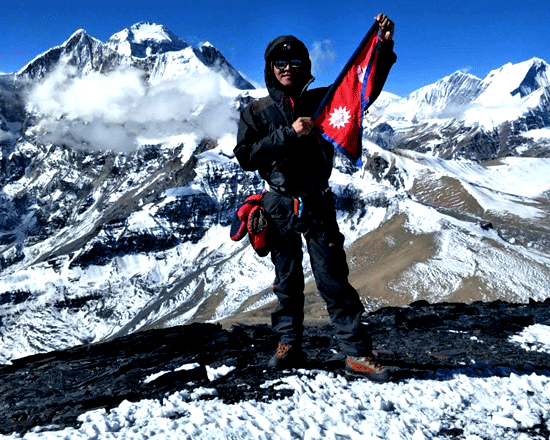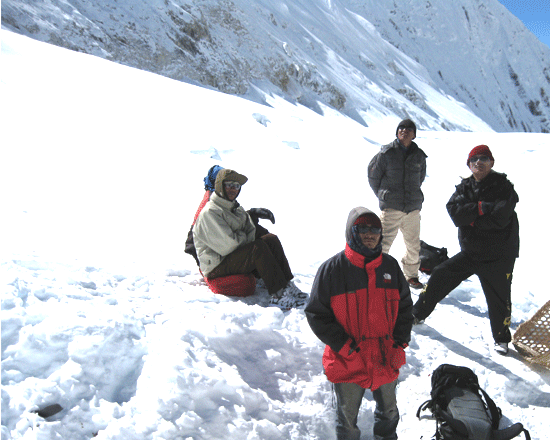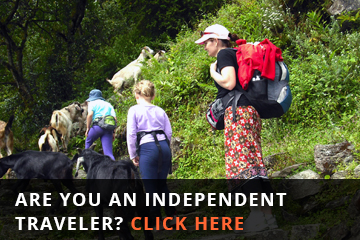Langshisha Ri Peak
Langshisha Ri Peak
Peak Climbing In NepalTrip Facts
This is challenging and technical Trekking, climbing of Nepal, you most have to physically fit and mentally prepare, off the beaten trails, camping or challenging high passes Treks, at this level can he arranged for periods of 18 to 32 days. Typically, a gradual ascent through a green river valley will lead you up to a number of high passes, where you will reach the altitude of 5416m. Often times, you will get a close insight into the Tibetan culture. Participants should expect to trek above 5416m/17872ft. or climbing 6540m.
100%
Overview
Langshisha Ri Peak Climbing: Scaling the Himalayan Heights
Langshisha Ri Peak (also known as Long Shisha Ri) is a formidable challenge and an exhilarating adventure for mountaineers and trekkers. At an impressive altitude of 6,427 meters (21,086 feet), Langshisha Ri Peak is a technical marvel, attracting those who seek to conquer its lofty summit with the promise of an extraordinary journey. This article engages the captivating world of Langshisha Ri Peak Climbing, unveiling this remarkable expedition’s allure, challenges, and rewards.
A Tale of Transformation: From Full Expedition to Affordable Challenge
Once classified as a full expedition peak, it became accessible to aspiring climbers with the Nepalese government’s assumption of control in 2002. This shift made Langshisha Ri Peak an enticing proposition for adventure enthusiasts who sought a thrilling experience in the heart of the Himalayas. With an affordable permit system and relatively straightforward access from Kathmandu, Langshisha Ri Peak attract with its promise of adventure and accomplishment.
The Splendor of the Langtang Valley
Best time for the Langshisha Ri
For the Langshisha Ri Peak, the best time to begin on this adventure are during the spring season, specifically from March to June. These months offer trekkers favorable weather conditions and excellent visibility, providing the opportunity to fully immerse themselves in the awe-inspiring natural beauty of the region. With blooming flowers and verdant greenery, the landscape becomes a feast for the senses, enhancing the overall appeal of the trek. Furthermore, during this time, the trails are relatively less crowded compared to the peak trekking season, ensuring a more tranquil and peaceful experience for adventurers.
Alternatively, the early months of September to December also present an optimal window for the Langshisha Peak Climbing. This period marks the autumn season when the weather is stable, and the skies are generally clear. The days offer mild temperatures, perfect for comfortable trekking. Autumn unveils breathtaking views of the surrounding mountains, as the exceptionally clear skies allow trekkers uninterrupted panoramas of the majestic Himalayas. Similar to the spring season, embarking on the Langshisha Peak during autumn offers the advantage of a peace journey, with fewer fellow trekkers on the trails.
The Ascent: Scaling Langshisha Peak
From Kyanjing, the Langshisha Ri Peak is captured. Over two days of challenging trekking, you’ll make your way to the base of Langshisha Ri, gearing up for the ultimate ascent. At an awe-inspiring altitude of 6,427 meters, the Langshisha Ri summit offers an unparalleled panorama of the Himalayan peaks. However, reaching this summit is not without its challenges. The ascent requires technical climbing skills, and the journey demands unwavering determination and fortitude. Yet, the Langshisha Ri expedition promises an adventure of a lifetime, an opportunity to test your strength and an experience that will forever be traced in your memory.
A Fusion of Trekkers and Climbers: Langshisha Peak and the Langtang Valley Trek
The Langshisha Ri Peak Climbing adventure is more than just conquering a peak; it offers an immersion into the majestic beauty of the Langtang Valley. To start, this breathtaking journey begins with a trek through the Langtang Valley and Kyanjing Gompa. Here, you will have the opportunity to scent the rich tapestry of Tamang culture, connect with the natural world, and delve into spiritual exploration. Along the way, you will encounter a Buddhist monastery, and subsequently, ascend to the heights of Tserko Ri, a scenic point standing at an impressive 5,000 meters above sea level. Furthermore, the culturally rich Kyanjing Gompa also awaits your exploration.
The Langshisha Peak Climbing Itinerary
The Langshisha Ri Peak Climbing itinerary spans a rigorous 17 days, pushing climbers both technically and physically. Situated within the Jugal Himalayan range of the Langtang Valley, this adventure promises not only an adrenaline rush but also breathtaking views of iconic Himalayan peaks. From Ganesh Himal and Dorje Lakpa to Shishapangma and Naya Kang, the Langtang Valley offers a mesmerizing spectacle of glaciated giants. It’s a chance to explore the pristine lakes, engaging into the region’s rich botanical diversity, and observe the Tibetan border from a unique perspective.
Expert Guidance and Local Insight
To conquer Langshisha Ri Peak, entrust your journey to the experts at Nepal Wilderness Trekking. Our experienced team leads Langshisha Peak Climbing expeditions at competitive prices, ensuring your safety and success. With guides and porters who hail from the same region, we possess an intimate knowledge of the Langtang Valley and its intricacies, providing you with unparalleled insights and support.
Physical fitness preparation
To undertake the Langshishsa Ri Peak Climbing, trekkers need to be physically fit. It is recommended to run for at least an hour a day for 10 to 15 days or for a month varying on your fitness level before the trek. This helps to build the individuals hiking stamina. This preparation helps in acclimatizing to the high altitudes and ensures you are ready for the demanding terrain of the trek.
What’s crucial is a willingness to prepare physically and mentally, and to respect the demands of the environment. Proper acclimatization ensures trekkers can fully enjoy the journey, absorbing the breathtaking landscapes and immersing themselves in the local culture. Ensure that, you bring the recommended trekking equipment list. Remember, a quality trekking equipment can make your trip enjoyable, while a poor one can make it miserable.
Since the weather Langshisha Ri Peak varies depending on the altitude and time of year, you should wear waterproof walking boots that you have already broken in, along with warm socks and gaiters for winter conditions. It is advisable to have loose, casual trousers, and thermal leggings, as well as waterproof pants.
Acclimatization
Acclimatization is crucial during high-altitude treks like the Langshisha Ri Peak. Altitude sickness, or acute mountain sickness (AMS), is a common concern and should not be taken lightly. We prioritize the well-being and safety of our trekkers. Additionally, our expert trekking guides are trained and experienced in high-altitude environments and provide first aid. We schedule a proper acclimatization day at Kyangjin Gompa, allowing you to explore the area and adjust to the altitude. It’s important to note that if you experience severe symptoms of altitude sickness, the only remedy is to descend as quickly as possible. Ultimately, it is your responsibility to assess your overall health condition and make decisions regarding your ability to continue the Langshisha Ri Peak.
Highlights of Langshisha Ri Peak Climbing
Embarking on a Langshisha Ri Peak Climbing adventure promises a host of exhilarating highlights:
- Trekking Through Langtang Region: Traverse the enchanting landscapes of the Langtang region, a journey that blends cultural immersion with natural beauty.
- Ascend Tserko Ri: Conquer Tserko Ri, an elevation of 5,000 meters, and witness awe-inspiring vistas that will leave an indelible mark on your soul.
- Kyanjing Gompa Exploration: Explore the spiritually rich Kyanjing Gompa, delving into its cultural significance and architectural beauty.
- Panoramic Himalayan Views: Revel in the breathtaking panoramas of Himalayan peaks, including Ganesh Himal, Dorje Lakpa, Shishapangma, Naya Kang, and Lang.
Note
We guarantee departure on all published dates of Langshisha Ri Peak. If these dates don’t match your travel plans, we are happy to create a trip for your desired dates. Let us know what kind of trip you are looking for, and we will help make your dream destination a reality. The other similar adventurous trek includes the three passes trek, Chhukung Ri and Gokyo Ri trek .
Detail Itinerary
- Day 01: Drives to Syabru Bensi, overnight at guesthouse.
- Day 02: Trek to Lama Hotel, overnight at guesthouse.
- Day 03: Trek to Langtang village, overnight at guesthouse
- Day 04: Trek to Kyanjin Gompa, overnight at guesthouse.
- Day 05: Acclimatization at Kyanjin Gompa, overnight at guesthouse.
- Day 10: Trek to Langsisa Kharka, overnight at a tented camp.
- Day 11: Trek to Langsisa Base Camp, overnight at a tent camp.
- Day 12: Ascent to Langsisa High Camp, overnight at tented camp.
- Day 13: Summit Langsisa RI (6427m) and back to Base Camp, overnight at tented camp
- Day 14: Trek back to Kyanjin Gompa, overnight at guesthouse.
- Day 15: Trek back to Lama Hotel, overnight at guesthouse.
- Day 16: Trek back to Syabru Bensi, overnight at guesthouse.
- Day 17: Drive back to Kathmandu
Cost Included
- Lodge accommodations till kyanjin gompa and tent during your climb
- Kathmandu / Syabrubesi / Kathmandu by local bus
- Fluent in English-speaking government training experience climbing Sherpa guide, cook and required porters, one porter for two pax.
- Langtang National park Permit, Peak permit, and TIMS permit
- Equipment clothing for the climbing Sherpas guide, porter, and staff.
- Kitchen crew.
- Climbing equipment Ice hammer, Rope, Snow bar, Ice-screw,
- Foods and Accommodations for Nepal staff.
- Wage and Insurance for all staff. Guide’s: Sherpa, porters, cook, Meals, lodge, insurance, equipment, salary, etc.
Cost Excluded
- Personal climbing gears and clothing,(available on hire).
- Hotel in Kathmandu
- all beverage, Soft and hard table drinks such as coke, beer,
- Drinking water/mineral water, etc. during the trek.
- Hot shower, laundry
- personal insurance
- Tip etc.

